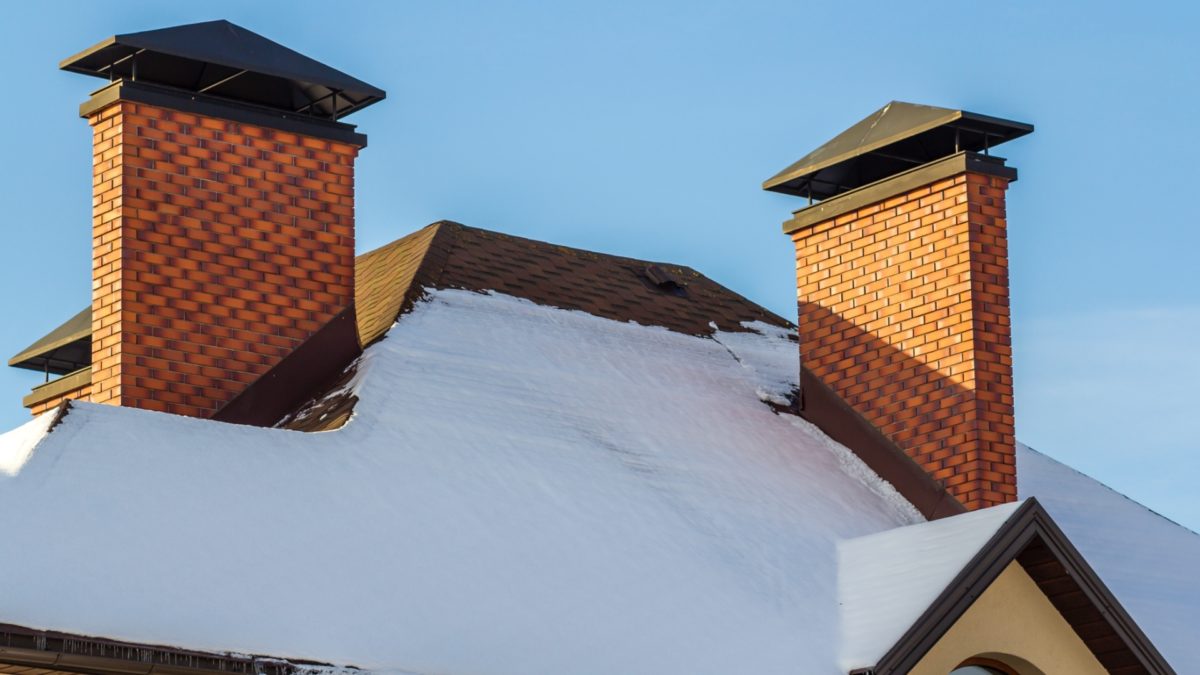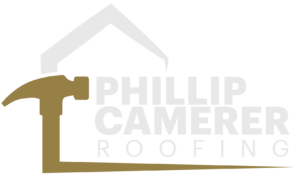How to Protect Your Roof with Chimney Flashing

Posted on February 2, 2022 by Phillip Camerer
While getting your roof ready for the upcoming winter storms, be sure to get your chimney flashing inspected. Every year homeowners are fighting the battle against water infiltration. Leaks that can lead to roof and structural damage are quite common, especially around anything that penetrates your roof, like a chimney. Chimney flashing helps protect your roof by creating a waterproof seal that binds the roof and chimney together. When done correctly, the seal won’t allow rain or melting snow to leak inside, increasing the life of your roof. Not only does chimney flashing protect your roof but also helps extend your chimney’s life span as well. From the valley and pipe vents to the chimney and skylights, it is important to waterproof every penetration from your roof before any leaks cause deterioration and damage.
Types of Chimney Flashing
It is important to know the different types of flashing and which type is on your roof. If you didn’t own your home when the roof flashing was placed it is recommended to seek out a professional for an inspection. As there are different factors that determine the best roof flashing, a roof inspection can help if the previous owners didn’t install the correct type or if it was installed improperly. This can save you money later down the road from costly roof repairs. Along with the types of flashing, they also come in different materials that have different levels of protection depending on your climate.
Common Chimney Flashing Problems
- Corrosion: regardless of the type of material or the conditions the chimney flashing is exposed to, corrosion to the flashing is a common contributor to leaks and is a significant problem. Although a material is the best for your roof, all materials will corrode over time, just at different rates.
- Improper Installation/Repair: From someone trying to install chimney flashing themselves to a subpar repair job, flashing installations that are not done properly creates a bigger expense. The compromised chimney flashing will have a shorter lifespan and will need to be redone again, a few years later. Even using lower quality chimney flashing materials causes the flashing to be replaced more frequently.
Signs You Need to Repair Your Chimney Flashing
- Leaks or puddles from the inside or around the outside of the chimney
- Sounds and evidence of dripping, like puddles and streaks
- Discoloration of bricks
- Rust stains
- Water stains on interior ceilings or walls
- Visible gaps or cracking in the caulking
Your Local Roofing Professionals
With the threat of snow and ice on the horizon, it’s best to ensure that your chimney flashing is waterproof and secure. When snow and ice start to melt, a leaky flashing can cause serious damage to your roof. Often homeowners only discover there is a problem when they find a leak. If the problem is not handled right away, major damage to your chimney, fireplace, as well as the attic and ceiling from drywall damage and wood rot. If you notice or suspect any damage, contact Phillip Camerer to ensure the problem is fixed right away. Detecting a leak or inspecting the chimney flashing can be a challenge, so it is important to schedule a regular roof inspection. We will inspect the condition of your roof and advise you on the proper steps to take if there are parts that need to be repaired.
While getting your roof ready for the upcoming winter storms, be sure to get your chimney flashing inspected. Every year homeowners are fighting the battle against water infiltration. Leaks that can lead to roof and structural damage are quite common, especially around anything that penetrates your roof, like a chimney. Chimney flashing helps protect your roof by creating a waterproof seal that binds the roof and chimney together. When done correctly, the seal won’t allow rain or melting snow to leak inside, increasing the life of your roof. Not only does chimney flashing protect your roof but also helps extend your chimney’s life span as well. From the valley and pipe vents to the chimney and skylights, it is important to waterproof every penetration from your roof before any leaks cause deterioration and damage.
Types of Chimney Flashing
It is important to know the different types of flashing and which type is on your roof. If you didn’t own your home when the roof flashing was placed it is recommended to seek out a professional for an inspection. As there are different factors that determine the best roof flashing, a roof inspection can help if the previous owners didn’t install the correct type or if it was installed improperly. This can save you money later down the road from costly roof repairs. Along with the types of flashing, they also come in different materials that have different levels of protection depending on your climate.
Common Chimney Flashing Problems
- Corrosion: regardless of the type of material or the conditions the chimney flashing is exposed to, corrosion to the flashing is a common contributor to leaks and is a significant problem. Although a material is the best for your roof, all materials will corrode over time, just at different rates.
- Improper Installation/Repair: From someone trying to install chimney flashing themselves to a subpar repair job, flashing installations that are not done properly creates a bigger expense. The compromised chimney flashing will have a shorter lifespan and will need to be redone again, a few years later. Even using lower quality chimney flashing materials causes the flashing to be replaced more frequently.
Signs You Need to Repair Your Chimney Flashing
- Leaks or puddles from the inside or around the outside of the chimney
- Sounds and evidence of dripping, like puddles and streaks
- Discoloration of bricks
- Rust stains
- Water stains on interior ceilings or walls
- Visible gaps or cracking in the caulking
Your Local Roofing Professionals
With the threat of snow and ice on the horizon, it’s best to ensure that your chimney flashing is waterproof and secure. When snow and ice start to melt, a leaky flashing can cause serious damage to your roof. Often homeowners only discover there is a problem when they find a leak. If the problem is not handled right away, major damage to your chimney, fireplace, as well as the attic and ceiling from drywall damage and wood rot. If you notice or suspect any damage, contact Phillip Camerer to ensure the problem is fixed right away. Detecting a leak or inspecting the chimney flashing can be a challenge, so it is important to schedule a regular roof inspection. We will inspect the condition of your roof and advise you on the proper steps to take if there are parts that need to be repaired.
[/fusion_text][/fusion_builder_column][/fusion_builder_row][/fusion_builder_container]
